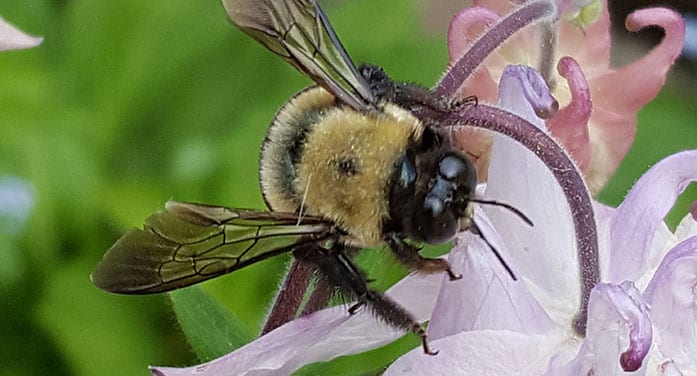 As a naturalist, I wonder about things – sometimes obvious things, sometimes odd things but always interesting things. Today’s thought surrounds interactions with insects, their kin and other critters that on occasion negatively interact with us.
As a naturalist, I wonder about things – sometimes obvious things, sometimes odd things but always interesting things. Today’s thought surrounds interactions with insects, their kin and other critters that on occasion negatively interact with us.
People often claim to have been bitten by an insect. “That mosquito just bit me!” But did it? Or did it just have an interaction with you that didn’t involve biting?
Many animals, such as mammals, have large teeth and certainly can inflict bites as they pierce and tear the flesh of their quarry.
Birds don’t have teeth but do have strong mandibles that can be snapped shut and cause serious pain. I know this from when I banded birds. Don’t ever let the lovely rose-breasted grosbeak sample your flesh – they can be nasty!
Some large reptiles and amphibians, although often toothless, can bite you with their strong bony jaws. Others, such as alligators and crocodiles, certainly have teeth and can inflict serious damage. Snakes are notorious for their fangs, which penetrate the skin to inflict injury.
Many fish (think about sharks) are notorious for their fierce bites. Crabs and lobsters can pinch you by using their claws, while jellyfish sting using their tentacles, not their mouths.
But do insects (and other invertebrates) have strong enough mouth parts or teeth to actually bite you?
Yes, some do.
Let’s start with mosquitoes. Only the female seeks a blood meal, as the males only have sucking mouthparts and can’t (and won’t) even try to ‘bite.’ The female, on the other hand, needs to penetrate the skin of warm-blooded mammals to get her meals. She uses her proboscis to pierce the skin and then suck the blood out through the small hole she made. Since the proboscis is a modified part of the mandible, should this be considered a bite?

The stingers of bees, wasps, hornets and their kin are always located on the abdomen of the insect and are used in defence or attack
Black flies certainly inflict painful wounds to the skin, as do deer flies. Again it’s only the females that seek a blood meal. Each tears a piece of flesh off the host and then sucks out the blood, leaving behind a bloody, raw wound.
Ants have strong mandibles and some (e.g. fire ants) can be very aggressive in their defence of a colony, clamping down with their strong jaws to break the skin.
Spiders often have two piercing structures on their mouth that they thrust into prey or interlopers.
Ticks pierce the skin using structures called chelicerae and then suck the host’s blood over a series of hours or days.
Some types of mites, such as chiggers, can also inflict painful and itchy welts on the skin. Unlike other invertebrates that feed on mammals, chiggers don’t attach themselves to the host to suck blood. However, like mosquitoes and ticks, chiggers can induce a nasty skin reaction (which comes from the chigger’s saliva) which they use to break down and digest our skin cells and tissue.
Leeches aren’t insects. Nonetheless, these invertebrates are known for their ability to draw blood from host animals, using abrasive bony mouthparts to scrape the skin until it bleeds and then sucking up the liquid.
Bees, wasps, hornets and their kin, on the other hand, don’t use their mouths to inflict injury – they use their stingers. These are always located on the abdomen of the insect and are used in defence or attack.
So where does that leave us?
The definition of biting is “A skin wound or puncture produced by an animal’s teeth or mouthparts.” So if we simply adopt that premise, as long as the animal uses its mouth parts in some way to penetrate the skin, for whatever purpose, then we can safely say we have been bitten by it.
On the other hand, we should say that a bee stung us rather than bit us.
Thank goodness that’s cleared up!
Geoff Carpentier is a published author, expedition guide and environmental consultant. Visit Geoff online at www.avocetnatureservices.com, on LinkedIn and Facebook.
The views, opinions and positions expressed by columnists and contributors are the authors’ alone. They do not inherently or expressly reflect the views, opinions and/or positions of our publication. © Troy Media
Troy Media is an editorial content provider to media outlets and its own hosted community news outlets across Canada.



